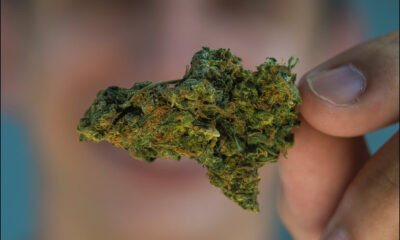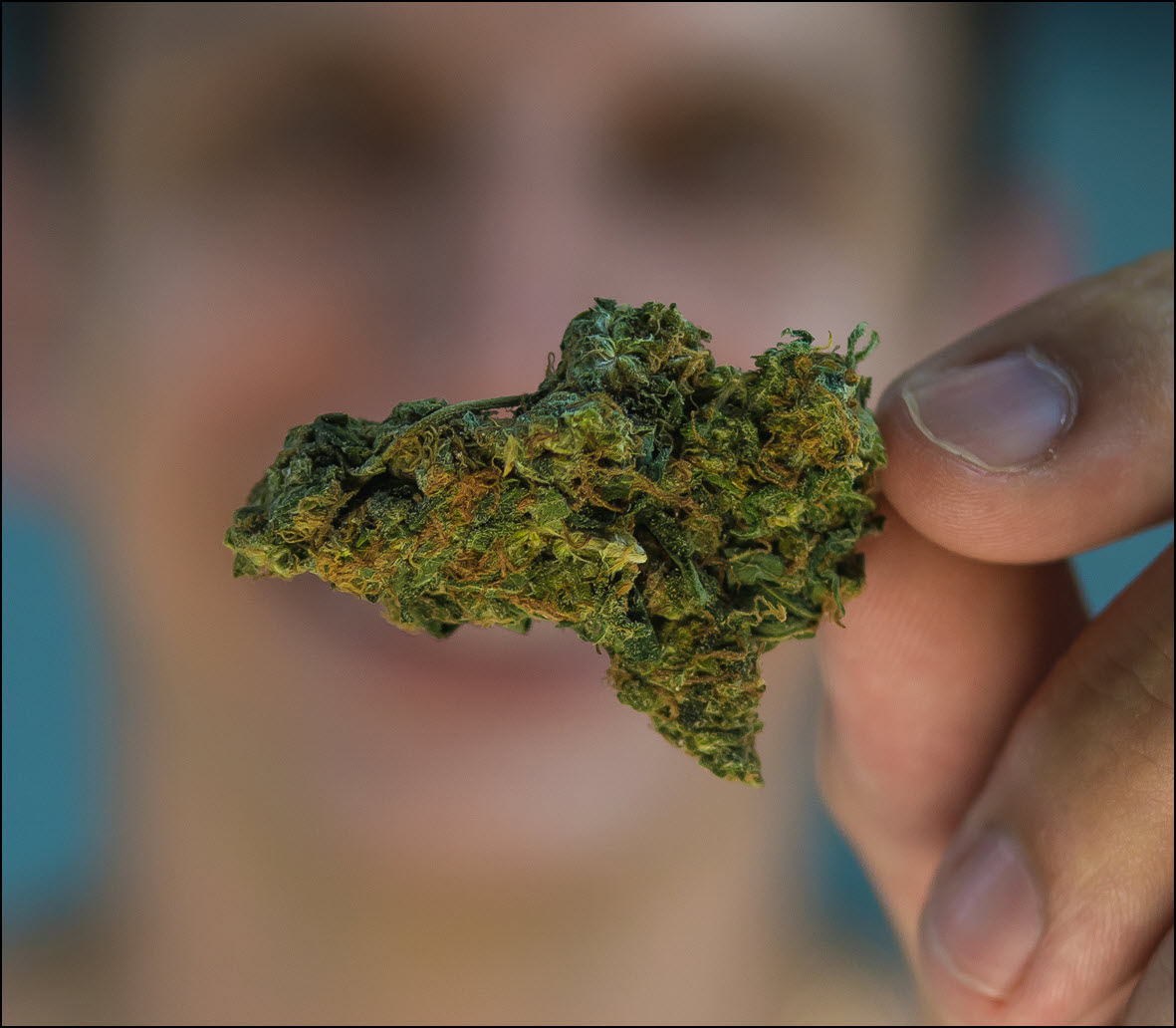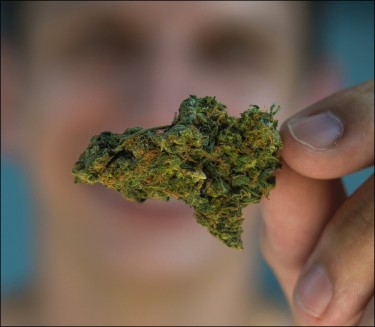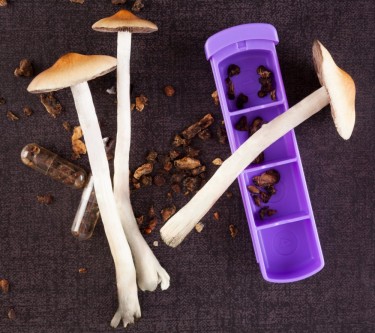Cannabis News
Magic Mushroom Recipes and Cooking Tips
Published
1 year agoon
By
admin

Magic Mushroom Recipes
Adding dried psilocybin mushrooms to your food is one of the best ways to get high. It’s one of the most common and efficient ways to consume it.
Certain species of mushrooms also have an umami-like flavor that lends a delicious taste to many dishes. Some people are unable to handle the taste of eating mushrooms on its own, which is why mixing it up into a tasty recipe is a better way of partaking. If you want the psilocybin to take effect quicker, then eat them up in food on an empty stomach. Otherwise, if you’ve already eaten something, it could take around 45 minutes for the psilocybin compounds to reach every cell in your body.
Dosage
Before you decide to cook with magic mushrooms, take note of dosage. Measuring magic mushrooms in grams is the most precise and convenient way to dose. One-tenth of a gram of magic mushrooms is enough for a mild microdose, while up to 2 grams per serving is good enough for beginners. If you are looking for a stronger, hallucinogenic experience, you may want to increase your dose to 3 or 4 grams for one serving.
Having a digital scale is always helpful for this purpose! You can always add more mushrooms, but you can’t get rid of less if you’ve already consumed it. It can be a very unpleasant experience being extremely high on mushrooms for around 7 hours especially if you lack experience, so always start low and slow.
Heat
Psilocybin tends to break down when it’s exposed to temperatures higher than 72.5C. Always keep the temperature as low as possible when cooking with psilocybin mushrooms in any form. Keeping a food thermometer on hand is helpful.
That said, check out the best recipes below for cooking up magical dishes with psilocybin mushrooms:
Recipes
Magic Mushroom Chocolates
One or two of these chocolate bites is enough to take you on a deliciously sweet psychedelic trip to another dimension. Psilocybin chocolates are the ultimate sweet tooth’s way to trip out!
Ingredients:
-
1 12-ounce bag of semi-sweet chocolate chips
-
1 ounce of dried psilocybin mushrooms
-
2 tablespoons of crushed toffee
-
4 tablespoons of crushed hazelnuts
Tools:
Process:
-
Use the grinder to grind up the dried mushrooms into a powder. Due to the large amount of mushrooms, you may have to break up the grinding into batches, but it’s important to make sure that all your mushrooms are evenly ground.
-
Melt the chocolate by boiling it on your stovetop. If you have an extra larger pot, double boiling is a more efficient technique for melting the chocolate.
-
Remove the chocolate and allow it to cool at room temperature. However, be careful not to let the chocolate harden. Hot temperatures can degrade the quality (and effect) of psilocybin mushrooms.
-
Gently stir in the magic mushroom powder into the melted chocolate. Use a silicone spatula to break any clumps up, ensuring there is uniform distribution of psilocybin powder in the mixture.
-
Add sugar if you like it sweeter.
-
Pour the chocolate into chocolate molds.
-
Let the chocolate chill and solidify in the refrigerator.
-
Enjoy!
Magic Mushroom Smoothie
One of the most refreshing and delicious ways to get high is to make a magic mushroom smoothie. They’re just like your regular smoothie, with various fresh ingredients such as fruits and even milk if you’d like, plus the goodness of psilocybin mushrooms. It’s one of the easiest ways to enjoy the benefits of psilocybin mushrooms and it requires very little preparation.
Ingredients:
-
Amount of dried psilocybin of your choice for one serving
-
Your own desired frozen fruit combination (strawberries, bananas, mango, etc)
-
Sweetener (honey, sugar, etc)
-
Yogurt
Tools:
Process:
-
Toss frozen fruit into the blender.
-
Add yogurt, milk, honey, or other ingredients you’d like.
-
Mix in the psilocybin.
-
Blend.
-
Sip and enjoy!
Grilled Cheese Mushroom Sandwich
Everyone loves a really good grilled cheese. This version is amped up with the addition of magic mushrooms. You can use the bread you have available, though sourdough, shokupan, or classic white bread are always recommended for an excellent grilled cheese. In addition, shredded cheese will melt much faster – you can buy pre-shredded cheese or shred it on your own.
Ingredients:
-
4 slices bread of your choice
-
2 to 300 grams of your favorite cheese, shredded (American cheese, white cheddar cheese, yellow cheddar cheese, Camembert, some blue cheese.. anything works!)
-
Mayonnaise
-
Butter
Process:
-
Butter each side of the bread, and slather on some mayonnaise on the inner slice.
-
Add cheese on top of the mayonnaise to. Add some ground mushrooms on top of each cheese layer.
-
Press one sandwich together, and do the same with the other pair.
-
Heat a pan on low heat with some butter, then slowly cook each side of the sandwich until it’s golden brown – around 3-4 minutes.
-
Slice the sandwiches diagonally.
-
Serve with a warm bowl of tomato soup or a salad.
Conclusion
These are just some of a few ways you can experiment with the goodness of dried magic mushrooms in your kitchen. You can also use fresh magic mushrooms in salads, or added into a pasta sauce. As long as you know the rules for preserving the psilocybin with heat and dosing, then the opportunities are endless!
HEALTH BENEFITS OF MAGIC MUSHROOMS, READ ON…
You may like
-


The 3 Biggest Winners from Rescheduling Cannabis?
-


Tribally owned marijuana store numbers up 25% since 2023
-


How Potent is Illegal Weed
-


Is Your Kid Smoking or Vaping Weed?
-


Press Release: PsychedelicNewsWire Named Official Media Sponsor of the 4th Annual Psychedelic Therapeutics and Drug Development Conference
-


Memorial Day’s best weed, prerolls, carts, and more 2024
Cannabis News
The 3 Biggest Winners from Rescheduling Cannabis?
Published
4 hours agoon
May 20, 2024By
admin

President Joe Biden’s support of the administration’s decision to reschedule cannabis from Schedule I to Schedule III is likely to result in considerable financial benefits for large, legal cannabis businesses and the illicit market. This action may lessen the restrictions imposed by IRS tax regulation 280E, which has banned cannabis businesses from deducting standard business expenditures. Which cannabis firms will gain the most from this change?
The illicit market will get a huge boost by removing the punshiments associated with getting caught dealing or transporting a Schedule 1 drug. Now that the fines, prison sentences, and desire to enforce Schedule 3 crimes is lessened, look for the illicit market to boom across America. It is estimated that the illegal cannabis market is 3x the size of the legal US market as of 2024, so look for that multiple to expand if Schedule 3 is enacted. Removing a negative incentive in economics always leads to predictable action.
In the legal market, the largest MSOS, or those that paid the most taxes, have the most to gain by a repeal of the 280E tax code and future tax credit or refunds coming their way
Industry Leaders in Tax Payments
Rescheduling cannabis will abolish the onerous 280E tax law, potentially freeing up more than a billion dollars in tax savings for the business. Curaleaf (OTC: CURLF) and Trulieve (OTC: TCNNF), both of which make considerable tax payments, are among the firms most likely to profit. Repealing 280E limits would allow these businesses to deduct typical business costs, greatly improving their financial situation.
Truelive alone stands to get $113,000,000 in tax refunds and savings!
Senior analyst Pablo Zuanic of Zuanic & Associates believes that these tax reductions may result in improved cash flows, allowing these businesses to reinvest in development and growth. In the quickly changing cannabis market, having this kind of financial flexibility is essential for keeping a competitive advantage and encouraging creativity.
Zuanic has consistently highlighted the disparity between current market valuations and the potential upside, particularly if federal legalization occurs. He emphasizes that immediate cash flow improvements could lead to substantial revaluation of these companies. By enabling the deduction of ordinary business expenses, the financial statements of these companies would more accurately reflect their true profitability, attracting more investors and boosting market confidence.
The potential tax savings are a temporary relief and a game-changer for the industry. Analysts believe that the improved cash flow could result in substantial revaluations of cannabis companies. For Curaleaf and Trulieve, this change would mean their financial statements would better represent their actual profitability, leading to increased investments and further expansion opportunities.
Curaleaf’s Financial Outlook
Beacon Securities’ Russell Stanley sheds light on Curaleaf’s financial landscape, highlighting the company’s adept management of operating cash flow. This proficiency facilitated a successful debt repurchase post-quarter, significantly enhancing its financial stability. With the anticipated rescheduling of cannabis and the potential enactment of the SAFER Banking Act, Curaleaf stands to benefit from a transformed financial environment, potentially witnessing a substantial surge in its operating cash flow by up to 92% and free cash flow by 188%.
Wedbush Securities recently released a report on Curaleaf, elevating the stock’s 12-month price target from $6.00 to $7.00 while maintaining a buy recommendation. The report underscores Curaleaf’s commendable performance in key domestic markets like Connecticut, Arizona, Maryland, and New York. Projections indicate a revenue uptick to $1.50 billion by 2025, coupled with improvements in overall profitability. This optimistic forecast reflects the company’s robust financial position and its strategic market presence.
Proactive debt management techniques and well-thought-out market positioning highlight Curaleaf’s potential for long-term development and financial success in the changing cannabis industry. Curaleaf is in a strong position to benefit from the rescheduling of banking and cannabis legislation, which may lower regulatory obstacles and further establish the company’s leadership in the cannabis market.
Unlocking Trulieve’s Growth Potential
Trulieve’s Growth Trajectory
Trulieve’s growth trajectory is drawing attention, particularly from Needham’s Matt McGinley, who emphasizes the company’s operational efficiency. McGinley points out that Trulieve has achieved its highest gross margin and EBITDA rates observed in over two years, indicating strong operational performance. This efficiency positions Trulieve favorably for capitalizing on emerging opportunities in the cannabis market.
Key legislative advancements in pivotal markets such as Florida and Pennsylvania present significant growth potential for Trulieve. As these markets potentially transition to adult-use cannabis, Trulieve stands to benefit from increased demand and expanded market reach. Leveraging its operational efficiency and established market presence, Trulieve is poised to capitalize on these legislative shifts to drive revenue growth and enhance shareholder value.
Trulieve is positioned to be a major participant in the growth of the cannabis sector due to its strategic focus on operational excellence and its flexibility in responding to changing regulatory environments. Trulieve is in an excellent position to maintain its growth trajectory and establish itself as a top cannabis supplier, thanks to encouraging legislative changes and a proven track record of high performance.
Analysts’ Industry Impact Assessment
Viridian Capital Advisors offers insights into the industry impact, noting that ten MSOs exceeded EBITDA estimates by $37 million in the first quarter of 2024. This performance suggests that initial projections may have been conservative, indicating a positive trend for cannabis companies. Analysts from Viridian specifically highlight Curaleaf and Trulieve, among others, as poised to benefit from the financial changes resulting from the removal of 280E tax restrictions.
The long-term outlook for the cannabis industry remains bullish, with potential federal legalization driving substantial valuation growth. Pablo Zuanic from Zuanic & Associates suggests that the US market alone could justify over $110 billion in valuations by 2030 assuming federal legalization. The removal of tax restrictions would directly impact bottom lines, potentially leading to significant valuation increases for many cannabis stocks.
All things considered, the possible repeal of the 280E tax laws offers cannabis businesses a big chance to improve their financial standing and market value. As analysts speculate that early projections may have overestimated the sector’s potential, businesses like Curaleaf and Trulieve might gain from more cash flow and better profitability, setting them up for long-term success in the changing cannabis market environment.
Bottom Line
The impending rescheduling of cannabis and the potential repeal of IRS tax regulation 280E offer a substantial opportunity for cannabis companies to strengthen their financial positions and market appeal. Industry leaders such as Curaleaf and Trulieve stand to benefit significantly, with projected increases in cash flow and profitability paving the way for sustained growth. Analysts anticipate a positive market response, with potential valuation growth and a bullish outlook for the long-term trajectory of the cannabis industry. These regulatory changes mark a pivotal moment, allowing businesses to capitalize on newfound financial flexibility and attract investor confidence. As the sector continues to evolve, Curaleaf, Trulieve, and other key players are positioned to thrive, driving innovation and shaping the future of the cannabis market.
WINNERS AND LOSERS FROM SCHEDULE 3, READ ON…


The average THC potency of illegal weed is only 16%, same as legal cannabis says DEA?
In the ever-changing landscape of cannabis, a striking revelation has come from the U.S. Drug Enforcement Administration (DEA). A recent statement established that the average potency of illicit marijuana flower stands at a industry standard of 16%. Understanding the implications of such a percentage requires a deeper dive into the realm of cannabinoids, particularly THC (tetrahydrocannabinol).
The Evolution of THC Potency
THC is the main psychoactive compound in marijuana, responsible for the “high” that users experience. The potency of marijuana, measured by its THC content, has dramatically increased over the past few decades. To understand the context:
-
1980s:The average THC content of seized marijuana was below 4%.
-
1990s: This figure began to climb, reaching around 5-6%.
-
2000s: Potency continued to increase, hitting approximately 10-12%.
-
2020s: Current reports indicate an average of 16%, with some samples even exceeding 30%.
This increase is primarily due to advanced cultivation techniques, genetic selection, and the growing demand for stronger marijuana.
Factors Contributing to Increased THC Potency
Several factors have contributed to the rising THC levels in illicit marijuana:
-
Selective Breeding: Growers have increasingly focused on breeding strains with higher THC content to meet market demand.
-
Advanced Cultivation Techniques: Techniques such as hydroponics, controlled environments, and optimized nutrient delivery have enabled the production of more potent marijuana.
-
Genetic Modification: Some strains have been genetically modified to enhance THC production.
Public Health Implications
The rise in THC potency has several significant public health implications:
-
Increased Risk of Negative Effects
-
Heightened Anxiety and Paranoia: Elevated THC levels can induce intense anxiety and paranoia, especially in inexperienced users or individuals with existing mental health issues.
-
Acute Psychosis: The likelihood of encountering psychotic episodes rises significantly with higher doses of THC.
-
Cognitive Decline: Prolonged use of marijuana with high THC content can result in enduring cognitive impairments, particularly impacting memory and learning abilities.
-
Adolescents: Young users are more susceptible to the negative effects of high-THC marijuana, including impacts on brain development.
-
Individuals with Mental Health Issues: Those with pre-existing mental health conditions may experience exacerbated symptoms.
Regulatory and Law Enforcement Challenges
The DEA’s report underscores significant obstacles faced by law enforcement and regulatory agencies:
-
Persistent Black Market: Despite legalization in several states, the black market for marijuana persists, often offering more potent products than those available in legal dispensaries.
-
Ensuring Consumer Safety: The unregulated nature of black market products results in unpredictable potency and potential contamination with harmful substances.
To address these issues, regulatory bodies need to:
-
Implement Stricter Controls: Introduce more stringent regulations for marijuana potency in both legal and illegal markets.
-
Increase Monitoring and Enforcement: Enhance efforts to monitor and dismantle illegal growing operations.
-
Educating Consumers: Consumer education is crucial in mitigating the risks associated with high-THC marijuana
-
Public Awareness Campaigns: Launch campaigns to inform the public about the potential dangers of high-THC marijuana.
-
Educational Programs: Develop programs targeted at specific groups, such as adolescents, to educate them about the risks.
Key points to emphasize in these programs include:
-
Understanding THC Levels: Educate consumers on how to read and understand THC levels on product labels.
-
Recognizing Symptoms of Overconsumption: Teach users how to recognize signs of overconsumption and what to do if they experience adverse effects.
-
Safe Consumption Practices: Promote safe consumption practices, including starting with low doses and waiting to see the effects before consuming more.
Future Trends and Research
Ongoing research and monitoring are essential to adapt to the evolving marijuana market:
-
Long-term Health Effects: Conduct studies to understand the long-term health effects of high-THC marijuana use.
-
Impact on Mental Health: Investigate the relationship between high-THC marijuana use and mental health conditions.
-
Comparative Studies: Compare the effects of high-THC marijuana with other forms, such as CBD-dominant strains, to provide a comprehensive understanding of marijuana’s impact.
Potential Solutions and Innovations
To address the challenges posed by high-THC marijuana, several solutions and innovations can be explored:
-
Development of Low-THC Strains: Encourage the development and use of low-THC, high-CBD strains that provide therapeutic benefits without strong psychoactive effects.
-
Improved Testing Methods: Invest in better testing methods to accurately measure THC content and detect contaminants.
-
Policy Reform: Advocate for policy reforms that support research and responsible use, including:
-
Incentives for Low-THC Products: Provide incentives for the production and sale of low-THC products.
-
Support for Medical Marijuana Research: Increase funding and support for research into the medical uses of marijuana.
Industrial and Economic Implications
The rise in THC potency also has significant industrial and economic implications:
The marijuana industry has become a significant economic driver in states where it is legal, contributing to tax revenues and job creation.
However, the black market remains a substantial challenge:
-
Revenue Losses: Illegal sales undermine tax revenues that could be used for public health and safety programs.
-
Market Competition: Legal businesses face unfair competition from black market operators who do not adhere to regulatory standards.
Engaging Stakeholders and Community
A critical aspect of addressing the challenges associated with high-THC marijuana is engaging with and gaining the support of local communities, policymakers, and industry leaders. The Ohio company has launched outreach programs to educate stakeholders about the benefits of bioplastics and the specific advantages of using hemp as a raw material.
Community involvement is crucial, especially in providing local farmers with the tools and knowledge needed to transition to hemp cultivation. Through:
-
Training Sessions
-
Pilot Programs
The company aims to build a robust local supply chain that can sustainably support large-scale bioplastic production.
Conclusion
In conclusion, the DEA’s report on the average THC potency of illicit marijuana flower reaching 16% highlights the significant changes in the marijuana landscape over recent decades. This increase poses new challenges for public health, regulation, and consumer safety. Addressing these challenges requires a multi-faceted approach involving education, regulatory reforms, technological advancements, and community engagement. By fostering a comprehensive understanding of the risks and benefits associated with high-THC marijuana, stakeholders can work together to ensure that the benefits of marijuana legalization are maximized while minimizing potential harms. This approach promises a healthier, safer future for all users and communities involved.
IS WEED REALLY GETTING STRONGER, READ ON…


Marijuana for recreational and medicinal purposes is becoming more widely available and simpler to purchase every day. Furthermore, opinions about the drug’s possible risks have changed as a result of recent legislative modifications, especially among young teenagers.
While proper use of marijuana can offer health benefits for specific conditions, inappropriate use can lead to a variety of problems. It can severely impact health, situational judgment, memory, coordination, and more.
Given that marijuana has rapidly become a much more commonly used drug among young people, it is crucial to recognize the main signs of marijuana use in teens to ensure their safety and well-being.
Statistics on Child Marijuana Use
Though the stats may surprise you, marijuana is the most often used narcotic among teenagers. Among children between the ages of 12 and 17, the National Center for Drug Abuse reports that:
– Nearly 44% have tried marijuana in their lifetime, up from 37% in 2019.
– 35% used marijuana in the past year.
– Almost 7% of 12th graders use marijuana daily.
Regretfully, eighth, ninth, and tenth kids are exposed to an alarmingly high level of marijuana. Early usage is problematic since those who start using earlier have a greater likelihood of heavier use later in life.
How THC Impacts the Brain
The active element in cannabis is tetrahydrocannabinol (THC), which produces the “high” associated with marijuana. THC can be ingested by smoking cannabis flowers, vaping concentrated forms, or eating THC-infused foods. THC impacts the brain by interfering with processes that are typically controlled by naturally existing endocannabinoids.
The brain grows from birth to the mid-twenties, and consuming marijuana at a young age can interrupt this important development. Early marijuana usage appears to influence brain development, according to recent research.
The effects of cannabis on the brain are extensive:
– Executive Functioning: Skills necessary for daily life, such as focus, memory, problem-solving, planning, reasoning, and emotional control, are compromised.
– Working Memory: The ability to remember and later recall or use information is reduced.
– Lingering Effects: The impact of cannabis use can last well beyond the period of intoxication. Even if someone smokes on a weekend, the effects can persist into the following week. Regular use leads to a persistent decline in executive functioning, working memory, and other cognitive areas.
Cannabis use interferes with the brain’s circuits, and it remains uncertain whether the brain can fully recover if marijuana use is discontinued.
Signs Your Child is Using Cannabis
Recognizing if your child is using marijuana can involve noticing various signs, including:
– Hair or clothes with a pungent marijuana smell
– Red or bloodshot eyes
– Delayed reaction times
– Mood swings
– Laziness and tiredness
– Presence of marijuana-related paraphernalia
– Paranoia or anxiousness
– Increased hunger or “munchies”
Visible Signs of Marijuana Use
Shortly after usage, marijuana’s effects can be perceived both visually and aromatically. It is very suggestive of marijuana usage if your adolescent returns home with red or bloodshot eyes. Physical and mental delays in response times and problems with muscular coordination are further symptoms.
Cannabis has a unique fragrance that is another warning clue; it is frequently characterized as having a pungent, musky smell like that of a skunk. On your teen’s clothes, this odor might cling rather readily.
Changes in Emotional State
The body and mind might react differently to different strains or varieties of marijuana. Teenage marijuana usage is frequently indicated by mood swings, lethargy, and general exhaustion in their day-to-day demeanor. Depending on how their body responds, they might also seem nervous and exhibit an elevated heart rate.
Your youngster may struggle to focus at job, school, or home as a result of these changes, which frequently results in subpar performance and grades. This decrease might be a clear indication that marijuana use has turned into an addiction.
Educating Your Child about Marijuana
Regardless of whether you suspect your child is using cannabis, it’s important to discuss it. Parents and caregivers should talk about all types of dangerous substances, including nicotine, alcohol, and cannabis, with children as early as elementary school.
It’s important to be proactive and talk to your youngster about the risks associated with marijuana. These talks may serve to deter marijuana usage or at the very least postpone the initial experience until the mid-20s, when the brain is more completely matured.
As teenagers become older, their need for independence grows, which makes it harder for parents to control their actions. Still, parents need to persevere. It is significantly more dangerous to consume cannabis than it is uncomfortable to have a difficult talk.
Addressing Marijuana Use and Seeking Help
For teenagers’ wellbeing, it is essential to identify and treat marijuana usage. It’s crucial to handle the matter with compassion and support if you think your child may be consuming marijuana. Discussing its usage, the rationale behind it, and any possible hazards should come first in an honest and nonjudgmental discussion. Give your child access to a secure environment where they may talk about their thoughts and experiences. You can gain insight into their viewpoint and advice on how to make better decisions by having this discussion.
If using marijuana has become troublesome, you might think about getting professional assistance. Resources like therapists, counselors, and specialty treatment programs can provide your kid with the help they need. These specialists are qualified to deal with underlying problems including stress, peer pressure, or mental health disorders that may be causing drug use. Early intervention can stop the usage from getting worse and support your kid in creating healthy coping mechanisms. Getting a medical expert involved can also offer a methodical way to handle the matter and guarantee that your adolescent gets the treatment they need.
It is critical to be involved and supportive throughout the process. Encourage your kid to participate in activities that support their well-being and offer positive reinforcement for good habits. Stay educated about the services available in your area, and consider joining support groups for parents struggling with similar challenges. You can assist your child in navigating this difficult period and promote a healthy, drug-free future by keeping open communication and obtaining expert support as required.
Bottom Line
Parents need to be vigilant about the signs of marijuana use in their children, given its prevalence among teenagers and its potential impact on their health and development. Early detection, open communication, and seeking professional help if needed are key strategies for addressing marijuana use in adolescents. By providing support, education, and access to resources, parents can help guide their children towards healthier choices and a drug-free future.
HOW TO HAVE “THE TALK” WITH YOUR KIDS, READ ON..

The 3 Biggest Winners from Rescheduling Cannabis?

Tribally owned marijuana store numbers up 25% since 2023

How Potent is Illegal Weed

Is Your Kid Smoking or Vaping Weed?

Press Release: PsychedelicNewsWire Named Official Media Sponsor of the 4th Annual Psychedelic Therapeutics and Drug Development Conference

Memorial Day’s best weed, prerolls, carts, and more 2024

Naps Done Right Can Make a Huge Difference

Michigan is selling more cannabis, but retailers are taking in less money

Can Marijuana Give A Break From All The Drama

Consumer Spending Validates Marijuana Rescheduling

Distressed Cannabis Business Takeaways – Canna Law Blog™

United States: Alex Malyshev And Melinda Fellner Discuss The Intersection Of Tax And Cannabis In New Video Series – Part VI: Licensing (Video)

Drug Testing for Marijuana – The Joint Blog

What you Need to Know

Cannabis, alcohol firm SNDL loses CA$372.4 million in 2022

NCIA Write About Their Equity Scholarship Program

City Of Oakland Issues RFP For Employee Training Programs

It has been a wild news week – here’s how CBD and weed can help you relax

A new April 20 cannabis contest includes a $40,000 purse

UArizona launches online cannabis compliance online course
Trending
-

 Cannabis News1 year ago
Cannabis News1 year agoDistressed Cannabis Business Takeaways – Canna Law Blog™
-

 One-Hit Wonders1 year ago
One-Hit Wonders1 year agoUnited States: Alex Malyshev And Melinda Fellner Discuss The Intersection Of Tax And Cannabis In New Video Series – Part VI: Licensing (Video)
-

 drug testing5 months ago
drug testing5 months agoDrug Testing for Marijuana – The Joint Blog
-

 Cannabis 1011 year ago
Cannabis 1011 year agoWhat you Need to Know
-

 Marijuana Business Daily1 year ago
Marijuana Business Daily1 year agoCannabis, alcohol firm SNDL loses CA$372.4 million in 2022
-

 Education1 year ago
Education1 year agoNCIA Write About Their Equity Scholarship Program
-

 Education1 year ago
Education1 year agoCity Of Oakland Issues RFP For Employee Training Programs
-

 Cannabis1 year ago
Cannabis1 year agoIt has been a wild news week – here’s how CBD and weed can help you relax







